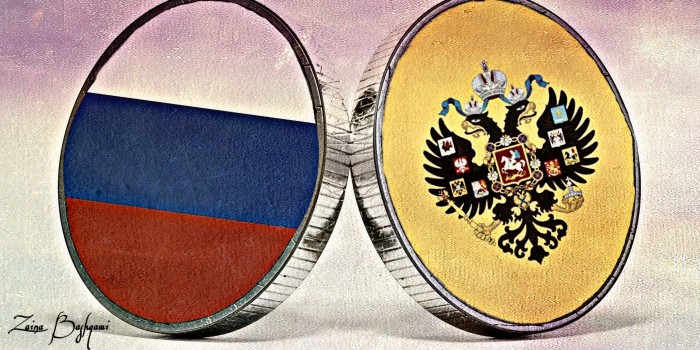The Russian Flag Reflects Tsarist Characteristics
By: Adel Bashqawi
22 / 2 / 2022
It is appropriate for people to know the true meaning of the symbols enshrined and used by states and entities, which thus give an idea of the distinction that a state or a particular entity would prefer to reflect. The symbols may pose a challenge to the parties who have been antagonized in the past and have not prioritized reconciliation, buried the hatchet or repaired the relationship, even after enough time has passed.
The Current Russian Flag
Regardless of the flags that the Russian State has used throughout its history, it has finally, after the dissolution of the Soviet Union, used the Tsardom flag. It symbolizes the recall the colonial past and the wars of extermination waged by the Russian Empire against many peoples and nations. The victims have nothing to connect them with the Russians, neither directly nor indirectly. The flag has represented only the citizens of Slav origin.
“The modern flag of Russia is a tricolor flag consisting of three horizontal fields: the top is white, the middle is blue, and the bottom is red. Initially, the flag was used only for Russian merchant ships but in 1696 it became the official flag of the Tsardom of Russia until the year 1922.” [1]
Further to that, the meaning of the colors is verified in different ways and means. “These colours are sometimes given traditional Russian symbolism—one such interpretation recalls the red shield of the Grand Principality of Moscow, with its representation of St. George cloaked in blue and mounted on a white horse.” [2]
Russian State Seal
The Russians like others, have used the double-headed eagle in their flag and coat of arms. “In 1472, Tsar Ivan III of Russia began using the double-headed eagle officially. This was part of the propaganda claim that Moscow was now the ‘Third Rome’ after the fall of Constantinople to the Turks. The Russian eagle was simply copied from the Byzantine one.” [3]
While, “Two-headed eagle remained the symbol of Russian Monarchy and Russian State for more than four hundred years, till the October Revolution of 1917,” it “regained its status in 1993.” Most common interpretation for the Seal “says that two heads of the eagle symbolize that Russia consists of two part – European and Asian, and they are of equal importance for the country.”
Although Russia has been subjected to strong revolutionary and political shocks, its imperialist policies have not changed. “When the old Rurick dynasty ended in the XVII-th century and Romanovs came to power, the two-headed eagle remained as the symbol of Russia, though three crowns were added above the eagle. They were to embody the unity of three nations – Russian, Ukrainian and Belorussian.” [4]
“The double-headed eagle has regained its status as the centerpiece of Russia’s state seal, testifying to the continuity of Russian history.” [5]
Russian Presidential Flag
It is not surprising that the presidential flag resembles the flag of the Tsarism that was in use by the Russian Emperors before the Bolshevik revolution in 1917, with all its meanings, arrogance and dominance. Not to mention that the state flag in force in the Russian Federation at the present time and since the decline and demise of the Soviet Union is similar to the flag that was used during the imperial era and which witnessed the colonial past in its fullest sense.
“(Flag) of the President of the Russian Federation is a square cloth with three equal horizontal stripes: the uppermost is white, the middle is blue and the bottom is red. In the centre there is a golden version of the State Seal of the Russian Federation. The cloth is gold-fringed.” [6]
Banning Russia from Participating and Raising its Flag in International Sports Events
In any case, the symbol can be stopped or banned by international competent authorities if illegal actions are taken. “In 2019, the World Anti-Doping Agency banned Russia from all international sporting competitions, including the Olympics, for four years over a doping scandal. The punishment was cut in half to two years by the Court of Arbitration for Sport following a 2020 appeal and now ends in December 2022. But at this year’s Olympics, Russia still can’t be represented as a country.” [7]
*******************
References
[1] https://www.youngpioneertours.com/russian-flag-history-meaning-colors/#russian-flag
[2] https://www.britannica.com/topic/flag-of-Russia
[4] https://greece.mid.ru/en/about_russia/state_symbols/
[5] https://www.rusemb.org.uk/russiasymbolik/

